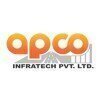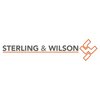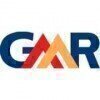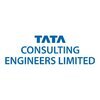Filter interviews by
Jsw Infrastructure Senior Officer Interview Questions and Answers
Jsw Infrastructure Senior Officer Interview Experiences
1 interview found
I applied via Recruitment Consultant and was interviewed in Oct 2021. There were 5 interview rounds.
Interview Questionnaire
4 Questions
- Q1. About port and its operations activity
- Q2. How my work start In office , my role in the department.
- Q3. Technical questions regarding vessels , logestics , storage and evacuation of cargo.
- Q4. About marketing terms and customs related questions
Interview Preparation Tips
Interview questions from similar companies

Senior Officer Interview Questions & Answers
Shapoorji Pallonji Groupposted on 25 Apr 2024
I applied via Naukri.com and was interviewed in Nov 2023. There were 2 interview rounds.
(1 Question)
- Q1. General Profile Discussion
(1 Question)
- Q1. Working Experience

I applied via Approached by Company and was interviewed before May 2023. There was 1 interview round.
(1 Question)
- Q1. Financial Accounting

I applied via Referral and was interviewed in Jul 2021. There were 5 interview rounds.
Interview Questionnaire
1 Question
- Q1. Related to Hospital Project
Interview Preparation Tips

(4 Questions)
- Q1. What about safety
- Q2. How to reduce hazards
- Q3. How devloped safety culture
- Q4. Without safety induction person do not allow towork
Interview Preparation Tips

I applied via Approached by Company and was interviewed in Nov 2024. There were 2 interview rounds.
(3 Questions)
- Q1. What is safety and how does it relate to hazards?
- Ans.
Safety is the state of being free from harm or danger, while hazards are potential sources of harm or danger.
Safety refers to the measures taken to prevent accidents, injuries, or illnesses in the workplace or any environment.
Hazards are potential sources of harm or danger that can cause accidents, injuries, or illnesses.
Safety measures are implemented to identify, assess, and control hazards to minimize risks and ensu...
- Q2. What are the role and responsibilities of HSE officer
- Ans.
HSE officers are responsible for ensuring health, safety, and environmental regulations are followed in the workplace.
Developing and implementing health and safety policies
Conducting regular inspections and risk assessments
Training employees on safety procedures
Investigating accidents and incidents
Ensuring compliance with local, state, and federal regulations
- Q3. What do you mean by Hira
- Ans.
HIRA stands for Hazard Identification and Risk Assessment. It is a systematic process for identifying potential hazards and evaluating the associated risks.
HIRA involves identifying hazards in the workplace or environment.
It includes assessing the risks associated with each hazard.
The goal of HIRA is to implement control measures to mitigate or eliminate the identified risks.
Examples of hazards include chemical exposur
(1 Question)
- Q1. What is the definition of safety and how does it relate to hazards?
- Ans.
Safety is the state of being free from harm or danger, while hazards are potential sources of harm or danger.
Safety refers to the condition of being protected from harm or danger
Hazards are potential sources of harm or danger that can cause accidents or injuries
Safety measures are put in place to mitigate or eliminate hazards
Examples of hazards include slippery floors, exposed electrical wires, and toxic chemicals
Interview Preparation Tips

I applied via Recruitment Consulltant and was interviewed in May 2023. There were 3 interview rounds.

(4 Questions)
- Q1. What is risk ,hazard and near miss?
- Ans.
Risk is the likelihood of a harmful event happening, hazard is a potential source of harm, and a near miss is a close call that could have resulted in harm.
Risk is the chance of a harmful event occurring, such as an accident or injury
Hazard is a potential source of harm, such as a slippery floor or faulty equipment
Near miss is a close call where an incident almost occurred but was avoided
Identifying and addressing risk...
- Q2. About BOCW Act. about critical lifting
- Q3. Type of fire extinguisher and it use
- Ans.
Different types of fire extinguishers include water, foam, CO2, dry powder, and wet chemical, each designed for specific types of fires.
Water extinguishers are suitable for Class A fires involving solid materials like wood or paper.
Foam extinguishers are effective on Class A and B fires, which involve flammable liquids like petrol or oil.
CO2 extinguishers are used for electrical fires (Class C) and flammable liquids (C...
- Q4. How many of fall arrestor
- Ans.
The number of fall arrestors required depends on the specific work environment and tasks being performed.
Number of fall arrestors needed is determined by the number of workers at height simultaneously
Consider the length of the fall arrestor lanyard and the distance to the nearest anchor point
Ensure that each worker has their own fall arrestor for individual protection
(1 Question)
- Q1. About payment and facility of next company

I applied via Campus Placement and was interviewed in Nov 2023. There were 2 interview rounds.
Material received and issue
Basic computer knowledge ms excel,sapmm

Store Officer Interview Questions & Answers
Kalpataru Projects Internationalposted on 5 Jun 2022
(4 Questions)
- Q1. Frist round is best round
- Q2. Whats is working position
- Q3. Whats is bulk items
- Ans.
Bulk items refer to products that are sold in large quantities or sizes, typically for commercial or industrial use.
Bulk items are usually purchased in large quantities to save money on per unit costs.
Examples of bulk items include rice, flour, sugar, cleaning supplies, and construction materials.
Bulk items are commonly found in wholesale stores or warehouses.
Bulk items are often packaged in larger containers or bags c
- Q4. What's is desiel density
- Ans.
Diesel density is the mass of diesel fuel per unit volume.
Diesel density is typically around 0.85 grams per cubic centimeter.
It is important for calculating fuel efficiency and storage capacity.
Density can vary slightly depending on the temperature and composition of the diesel fuel.
Interview Preparation Tips

Interview Questionnaire
9 Questions
- Q1. Whatvis mean risk assessment
- Ans.
Risk assessment is the process of identifying, evaluating, and prioritizing potential risks to determine appropriate control measures.
Risk assessment involves identifying hazards and potential consequences.
It evaluates the likelihood and severity of each risk.
Prioritization helps in determining which risks require immediate attention.
Control measures are implemented to mitigate or eliminate identified risks.
Examples in...
- Q2. What's is mean by hazards
- Ans.
Hazards refer to potential sources of harm or danger that can cause injury, illness, or damage to property.
Hazards can be physical, chemical, biological, or psychological in nature.
Examples of hazards include slippery floors, toxic chemicals, infectious diseases, and workplace stress.
Identifying and assessing hazards is an important part of ensuring safety in any environment.
Effective hazard control measures can help t...
- Q3. Wahis mean by work permit
- Ans.
A work permit is a document that authorizes a person to perform a specific job or task in a designated area.
Work permits are used to ensure that work is carried out safely and efficiently.
They are typically issued by a supervisor or manager and must be obtained before starting work.
Work permits may include information such as the type of work to be performed, the hazards involved, and the safety precautions that must b...
- Q4. Whas is mean by msds
- Ans.
MSDS stands for Material Safety Data Sheet.
MSDS is a document that provides information about the hazards of a particular substance or product.
It includes information on the chemical composition, physical properties, and safe handling procedures.
MSDS is required by law for all hazardous substances and products.
It is important for workers to have access to MSDS to ensure their safety in the workplace.
- Q5. What's is mean by lti
- Ans.
LTI stands for Lost Time Injury, which refers to a work-related injury or illness that results in time off from work.
LTI is a common safety metric used in workplaces to track and analyze workplace injuries and illnesses.
It is calculated by dividing the number of lost workdays by the total number of hours worked.
LTI is an important indicator of workplace safety and can help identify areas for improvement.
For example, if...
- Q6. What is mean by hot work
- Ans.
Hot work refers to any activity that involves open flames or generates heat and sparks.
Examples include welding, cutting, brazing, soldering, grinding, and using a torch.
Hot work requires a permit and must be conducted in a designated area with proper ventilation and fire safety measures.
Workers must wear appropriate personal protective equipment (PPE) and be trained in hot work safety procedures.
Hot work can pose a se...
- Q7. What is mean by cold work
- Ans.
Cold work refers to any work that is done on a metal at room temperature or below.
Cold work can include processes like bending, punching, or rolling.
It can increase the strength and hardness of the metal, but can also make it more brittle.
Cold work is often used in the manufacturing of metal products like pipes, wires, and sheet metal.
It is important to take safety precautions when performing cold work, as it can creat
- Q8. What's is mean by hieght work
- Ans.
Height work refers to any work that is performed at a height above ground level.
Examples of height work include working on rooftops, climbing ladders, and working on scaffolding.
Height work requires proper safety equipment such as harnesses, helmets, and safety ropes.
Workers performing height work should be trained in proper safety procedures and should be aware of the risks involved.
Height work can be dangerous and ca...
- Q9. What is mean by excavation
- Ans.
Excavation refers to the process of digging or removing earth or other materials from the ground.
Excavation is commonly used in construction and mining industries.
It involves the use of heavy machinery such as excavators, bulldozers, and backhoes.
Excavation can be done for various purposes such as building foundations, laying pipelines, or creating underground tunnels.
Safety measures such as shoring, sloping, and bench...
Interview Preparation Tips
Jsw Infrastructure Interview FAQs
Tell us how to improve this page.
Jsw Infrastructure Interviews By Designations
Interview Questions for Popular Designations
People are getting interviews through
Interview Questions from Similar Companies
|
Assistant Manager
50
salaries
| ₹5.8 L/yr - ₹14.5 L/yr |
|
Deputy Manager
23
salaries
| ₹7.8 L/yr - ₹15 L/yr |
|
Junior Manager
18
salaries
| ₹4.7 L/yr - ₹7.6 L/yr |
|
Manager
10
salaries
| ₹11.2 L/yr - ₹20.5 L/yr |
|
Graduate Engineer Trainee (Get)
8
salaries
| ₹4 L/yr - ₹8.5 L/yr |

Adani Ports and SEZ

GMR Group

Larsen & Toubro Limited

Reliance Infrastructure
Calculate your in-hand salary
- Home >
- Interviews >
- Jsw Infrastructure Interview Questions >
- Jsw Infrastructure Senior Officer Interview Questions









